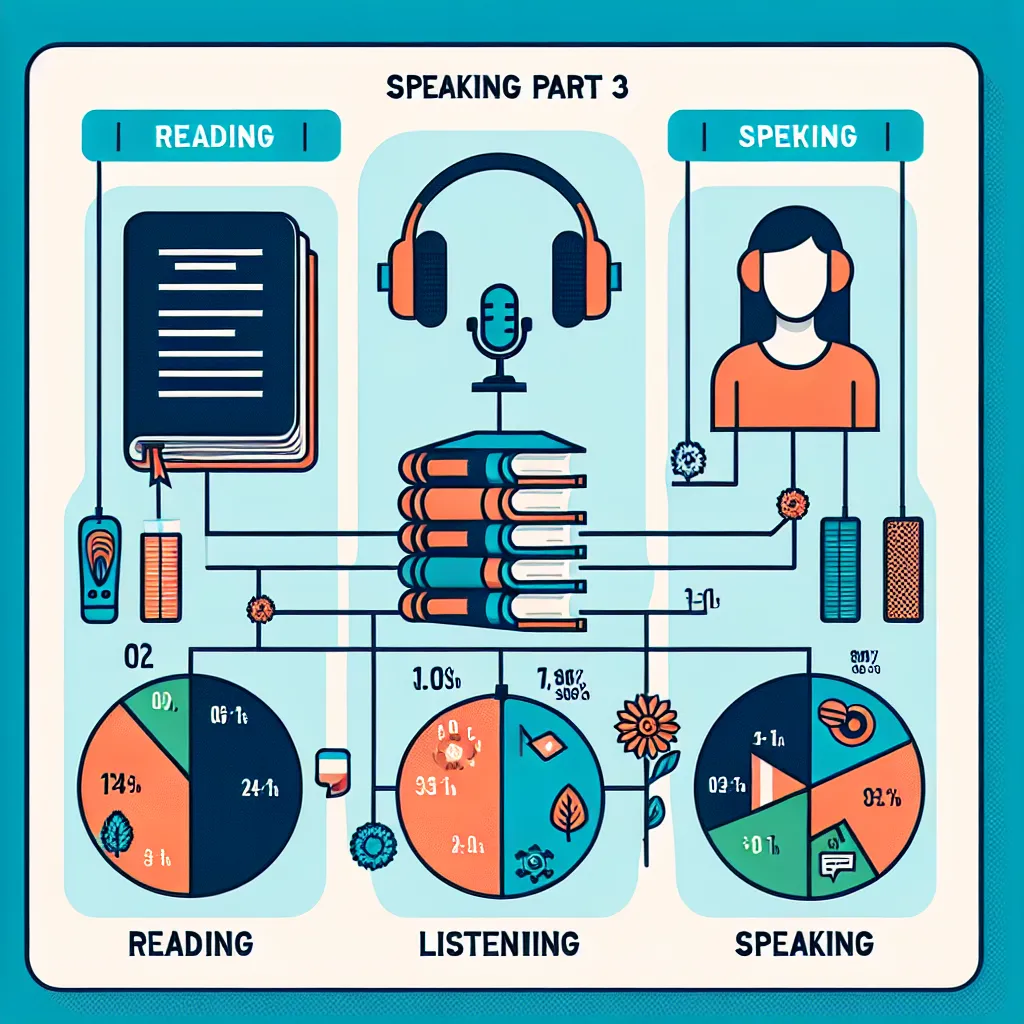Are you preparing for the TOEFL exam and feeling anxious about the Speaking section, particularly Part 3? You’re not alone. Many test-takers find this part challenging, but with the right approach and practice, you can master it. In this comprehensive guide, we’ll break down everything you need to know about answering TOEFL Speaking Part 3 in detail, providing you with valuable insights and strategies to boost your confidence and performance.
Understanding TOEFL Speaking Part 3
TOEFL Speaking Part 3, also known as the Integrated Speaking Task, is designed to assess your ability to comprehend and synthesize information from both reading and listening materials. This task simulates real-life academic situations where you need to process information from multiple sources and express your understanding orally.
 TOEFL Speaking Part 3 Overview
TOEFL Speaking Part 3 Overview
Key Features of TOEFL Speaking Part 3
- You have 45-50 seconds to read a short passage about a campus-related topic.
- You then listen to a conversation or lecture related to the reading passage (60-90 seconds).
- After the listening section, you have 30 seconds to prepare your response.
- Finally, you have 60 seconds to speak and deliver your answer.
Step-by-Step Guide to Answering TOEFL Speaking Part 3
1. Reading Phase (45-50 seconds)
- Quickly skim the passage to grasp the main idea.
- Focus on identifying the key points or problem presented.
- Don’t worry about memorizing every detail; you’ll have a chance to look at it again during preparation time.
2. Listening Phase (60-90 seconds)
- Pay close attention to the speaker’s main points and how they relate to the reading passage.
- Listen for specific examples, reasons, or solutions provided in the conversation or lecture.
- Take mental notes of any numbers, names, or key terms mentioned.
3. Preparation Phase (30 seconds)
- Use this time wisely to organize your thoughts.
- Jot down key points from both the reading and listening sections.
- Create a simple outline for your response, ensuring you address both sources of information.
4. Speaking Phase (60 seconds)
- Start with a brief introduction summarizing the main topic.
- Present the key points from the reading passage.
- Explain how the listening material relates to or expands upon the reading.
- Provide specific examples or details from both sources to support your answer.
- Conclude with a brief summary if time allows.
Strategies for Success in TOEFL Speaking Part 3
1. Practice Active Listening
Develop your ability to quickly identify main ideas and supporting details in conversations and lectures. This skill is crucial for TOEFL Speaking Part 3.
2. Improve Note-Taking Skills
Learn to take efficient notes during both the reading and listening phases. Focus on key words and concepts rather than trying to write everything down.
 Effective Note-Taking for TOEFL Speaking
Effective Note-Taking for TOEFL Speaking
3. Develop a Template
Create a mental template for your response that includes an introduction, main points from both sources, and a conclusion. This structure will help you organize your thoughts quickly.
4. Use Transitional Phrases
Incorporate transitional phrases to connect ideas smoothly, such as “According to the reading passage,” “The speaker in the conversation mentions,” or “This relates to the reading because…”
5. Practice Time Management
Train yourself to speak for the full 60 seconds without running out of things to say or rushing through your response. Use a timer during practice sessions to get a feel for the allocated time.
6. Enhance Your Vocabulary
Build a strong academic vocabulary to express ideas clearly and concisely. Focus on words and phrases commonly used in academic discussions.
7. Record and Analyze Your Responses
Use your smartphone or computer to record your practice responses. Listen to them critically and identify areas for improvement in content, pronunciation, and fluency.
Common Mistakes to Avoid in TOEFL Speaking Part 3
- Focusing solely on one source of information (either reading or listening).
- Spending too much time on details and failing to convey the main ideas.
- Not connecting the information from the reading and listening sections.
- Speaking too quickly or too slowly due to nervousness.
- Using filler words excessively (um, uh, like).
- Failing to manage time effectively and not completing the response.
Next Steps for Mastering TOEFL Speaking Part 3
- Regularly practice with official TOEFL sample questions and full-length practice tests.
- Join online TOEFL study groups or forums to exchange tips and practice with peers.
- Seek feedback from English teachers or TOEFL tutors on your practice responses.
- Expand your knowledge of common academic topics to improve your comprehension and speaking abilities.
- Work on improving your overall English fluency through daily practice in reading, listening, and speaking.
By following these strategies and dedicating time to consistent practice, you can significantly improve your performance in TOEFL Speaking Part 3. Remember, the key to success lies in understanding the task requirements, developing a structured approach, and honing your skills through regular practice.
As you continue your TOEFL preparation journey, don’t forget to explore other sections of the test and seek additional resources to support your studies. With determination and the right approach, you’ll be well on your way to achieving your desired TOEFL score.




